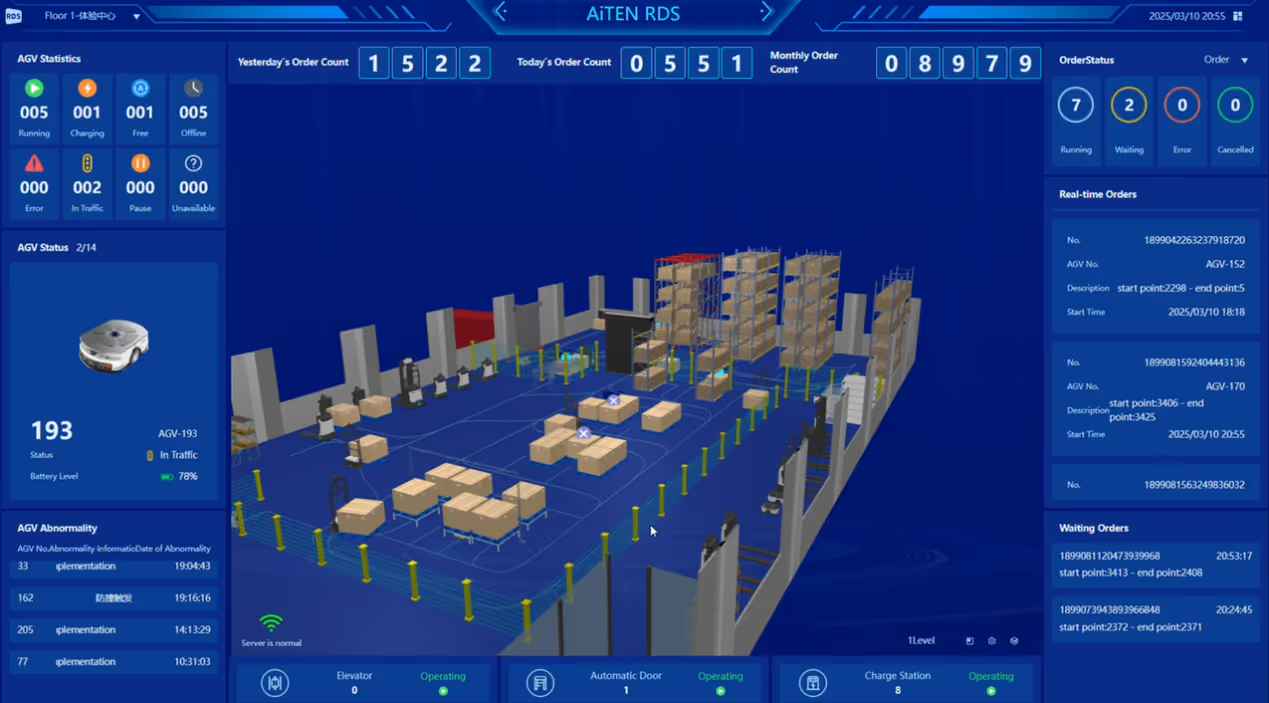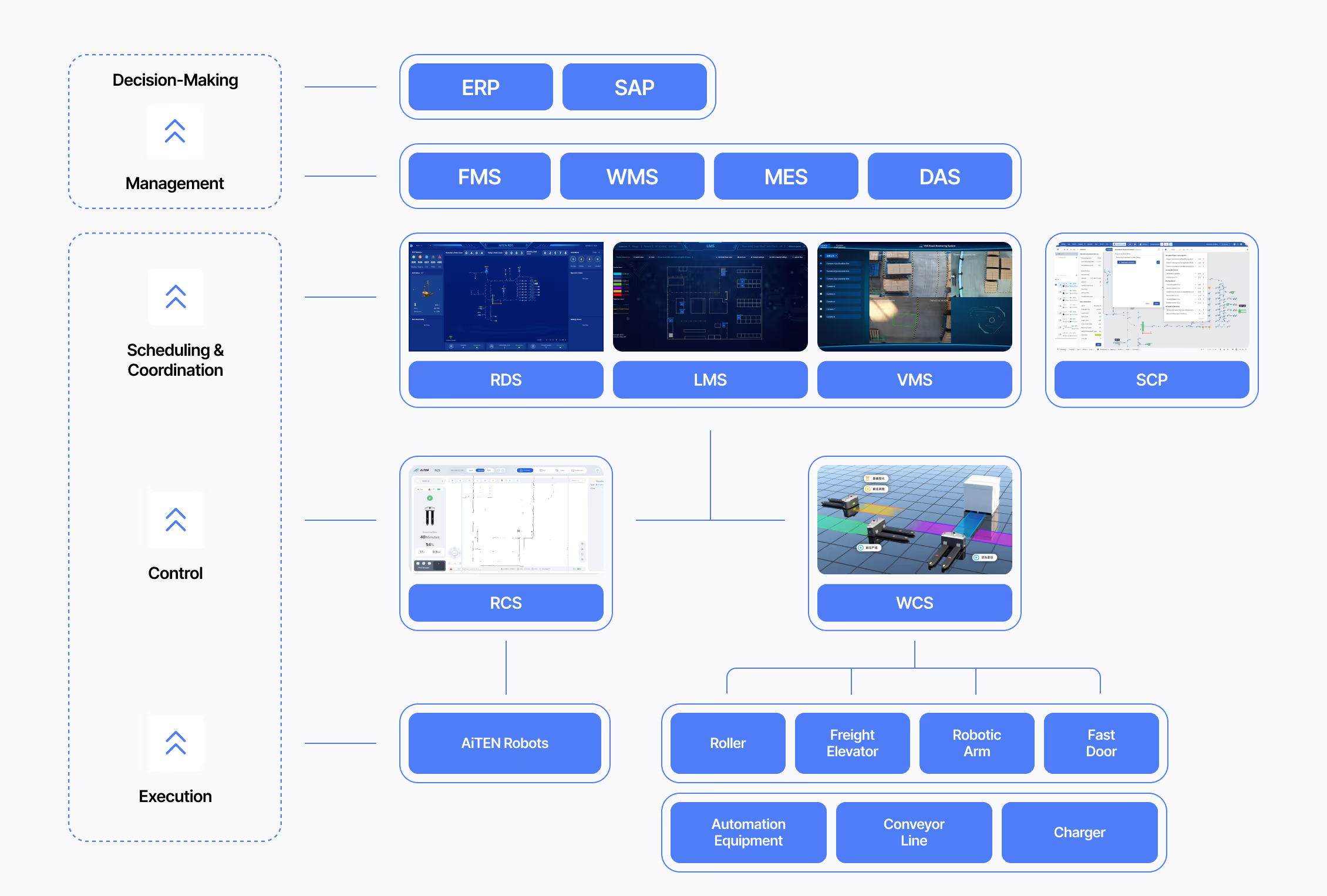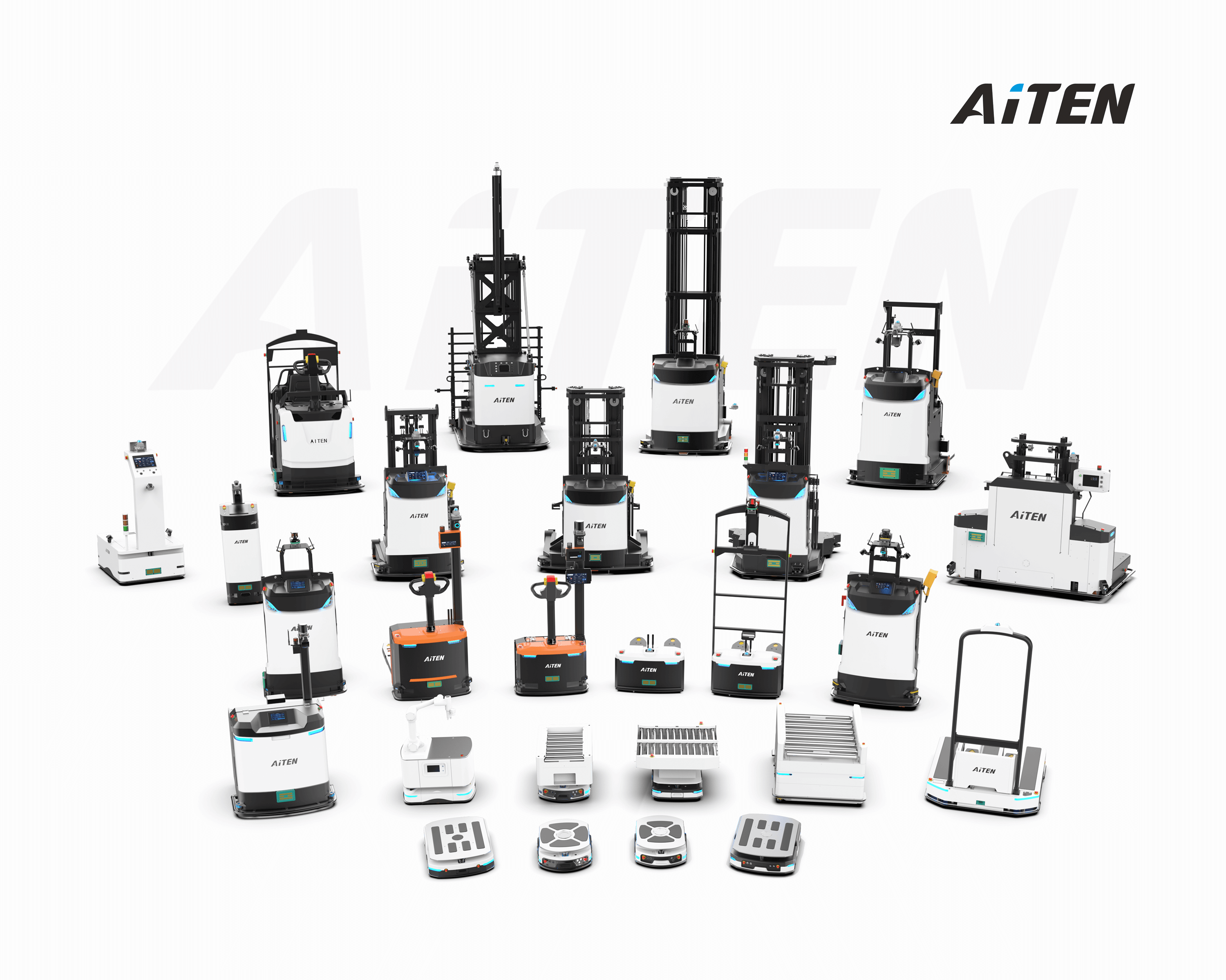自動運転フォークリフトと倉庫管理システム(WMS)の統合

自動運転フォークリフトと倉庫管理システム(WMS)の相乗効果は、現代の物流自動化のバックボーンです。この2つのテクノロジーが調和して機能するとき、倉庫はかつてない効率性、正確性、拡張性を発揮します。ここでは、最適な結果を得るために統合を活用する方法を説明します。
統合が重要な理由
倉庫管理は現代のオペレーションにおいて極めて重要な役割を担っており、世界中の企業が効率性と生産性を向上させるために倉庫プロセスを最適化する方法を常に模索しています。この目標を達成するために、先進技術の統合がゲームチェンジャーであることが証明されています。こうしたテクノロジーの中でも、倉庫管理ソフトウェア(WMS)は強力なツールとして際立っており、在庫管理、注文処理、倉庫業務全体の合理化を支援しています。
ロジスティクス・マネジメント・レポートによると、倉庫管理ソフトウェアは倉庫業務の83%で使用されている。とはいえ、今日のダイナミックな環境の性質上、競争に先んじることが必要であり、自動運転フォークリフトが重要なイノベーションとして浮上している。
最先端のAIと機械学習アルゴリズムを搭載したこれらのフォークリフトは、倉庫オペレーションに革命をもたらし、より効率的で、安全で、費用対効果の高いオペレーションを実現する可能性がある。WMSの機能と自動運転フォークリフトを組み合わせることで、企業はオペレーショナル・エクセレンスの新たなレベルを解き放つことができる。

主な統合能力
1.シームレスなタスク割り当て
WMSのアルゴリズムは、オーダーの優先順位、在庫の位置、フォークリフトの稼働率を分析し、最適なタスクをディスパッチする。例えば、ピーク時には、システムは自動運転フォークリフトに優先順位の高い注文を指示し、混雑を避けるために動的にルートを変更する。
2.リアルタイム在庫同期
自動運転フォークリフトが商品を移動すると、そのセンサーが位置の変化を記録し、WMSで即座に更新されます。これにより、在庫記録が実際の位置を反映し、「幻の在庫」の問題を排除し、正確な需要予測を可能にします。

3.安全性とコンプライアンスの調整
統合は、フォークリフトがWMSが定義した安全ルール(制限区域、交通量の多い場所での速度制限、積載量チェック)を遵守することを確実にします。フォークリフトが異常(例えば予期せぬ障害物)を検出した場合、WMSに警告を発し、WMSは関連作業を一時停止し、管理者に通知します。
統合を成功させるためのベストプラクティスとは?
自律走行車とWMSの統合を成功させるためには、いくつかのベストプラクティスに従うべきである:
- 試験運用: 本格的な展開の前に、徹底的なテストと試験運用が不可欠です。管理された環境で広範なテストを実施することで、統合を検証し、潜在的な問題やパフォーマンスのギャップを特定して解決することができます。
- モニタリングと最適化:統合後は、継続的なモニタリングと最適化を実施すべきである。統合システムから収集したデータを分析することで、企業はさらなる最適化、効率性、生産性の向上の機会を特定することができる。
- 定期的なメンテナンスとアップデート: 定期的なメンテナンスとアップデートは、自動運転フォークリフトとWMS統合のシームレスな操作のために重要です。メンテナンス・スケジュールを確立し、メーカーが提供するソフトウェア・アップグレードとパッチを常に更新することで、最適な性能と最新の機能と拡張機能へのアクセスが保証されます。
これらのステップに従い、ベストプラクティスを実施することで、倉庫は産業用オートメーションの可能性を最大限に引き出し、オペレーションを最適化し、効率性と生産性の大幅な改善を推進することができます。
まとめ
自動運転フォークリフトをWMSと統合することで、倉庫は静的な保管スペースから動的でデータ駆動型のエコシステムに変わります。それはコストを削減し、エラーを最小化し、変動する需要に適応する、今日のペースの速いロジスティクスの状況において重要な利点です。
この可能性を解き放つ準備はできていますか?当社の自動運転フォークリフトは、主要なWMSプラットフォーム用の事前構築済みコネクタが付属しており、初日から結果を出すスムーズな統合を保証します。









_%E7%94%BB%E6%9D%BF%201.avif)
.MP10S%E5%8A%A0%E9%AB%98%E6%94%AF%E6%9E%B6%20(3).png)
